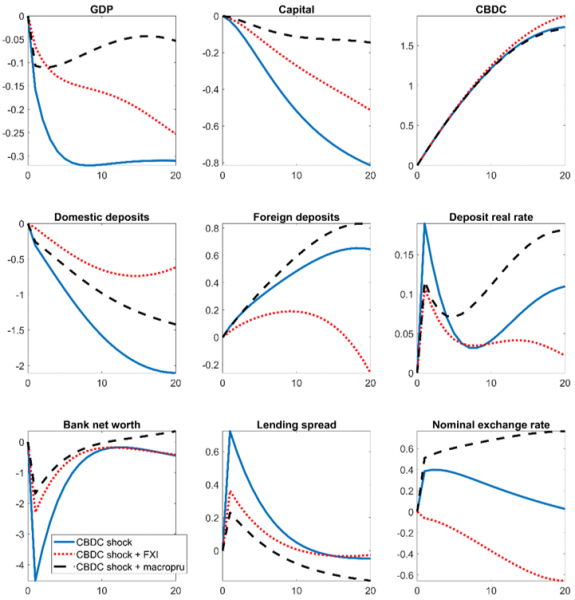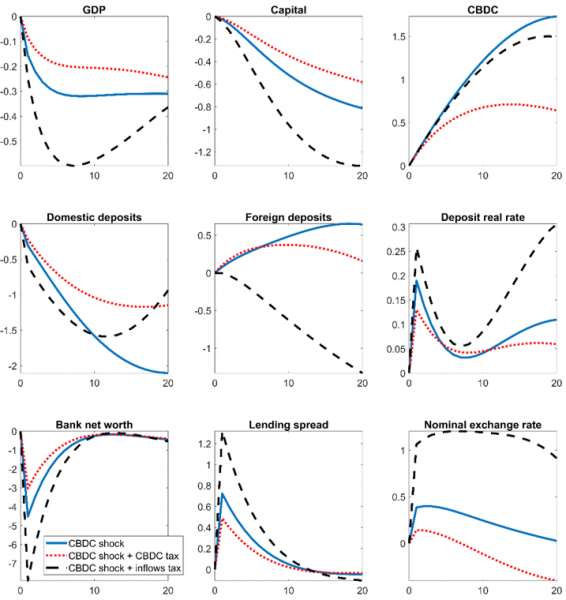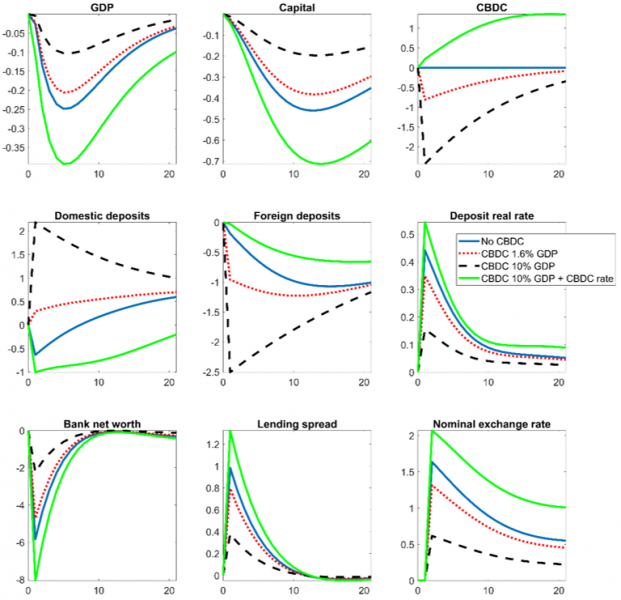References
Auer, R., J. Frost, L. Gambacorta, C. Monnet, T. Rice, and H. S. Shin (2022): “Central Bank Digital Currencies: Motives, Economic Implications, and the Research Frontier”, Annual Review of Economics, 14, 697–721.
BIS (2021): “Central Bank Digital Currencies for Cross-Border Payments”, BIS Report to the G20. BIS, IMF, and WB (2022): Options for Access to and Interoperability of CBDCs for Cross-Border Payments, Note for the G20.
Moro, A. and V. Nispi Landi (2023): “The External Financial Spillovers of CBDCs”, Temi di Discussione (Bank of Italy Working Papers), N. 1416.
Soderberf, G., W. Bossu, N. Che, J. Kiff, I. Lukonga, T. Mancini-Griffoli, T. Sun, and A. Yoshinaga (2022): “Behind the Scenes of Central Bank Digital Currency,” IMF Fintech Notes, 004.







